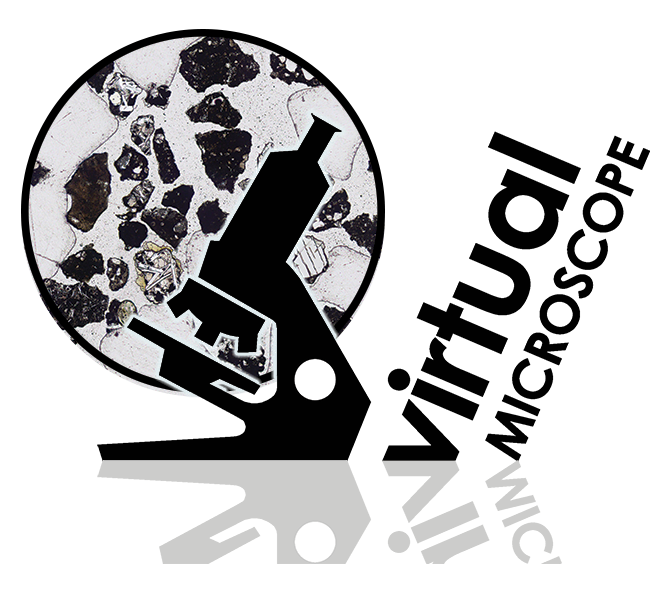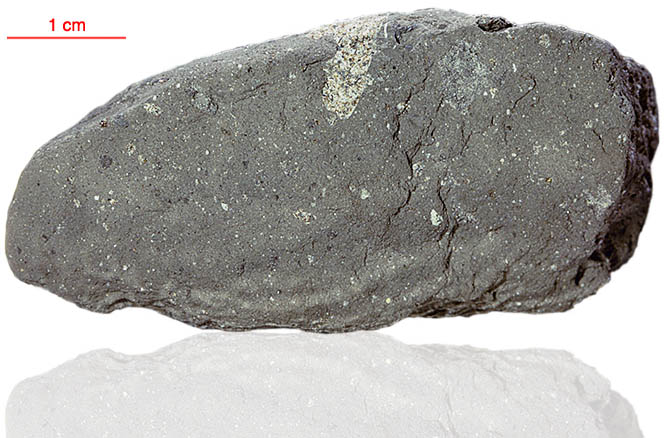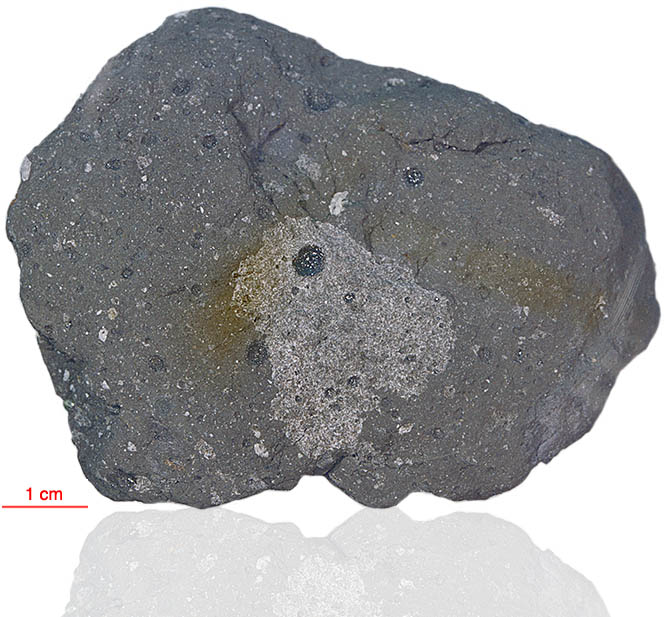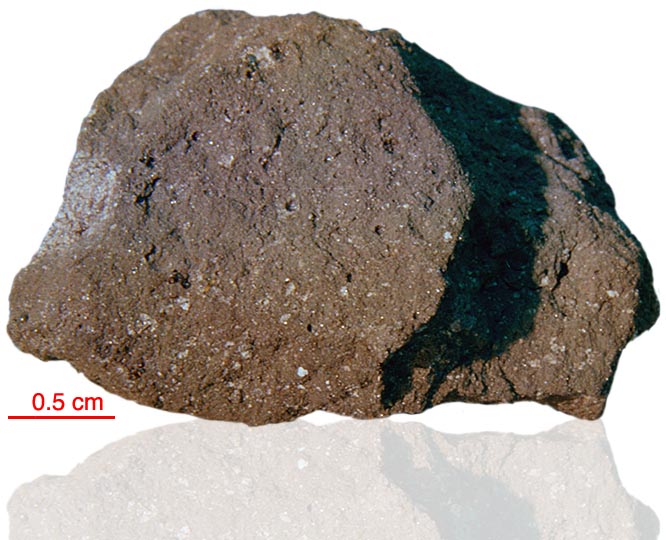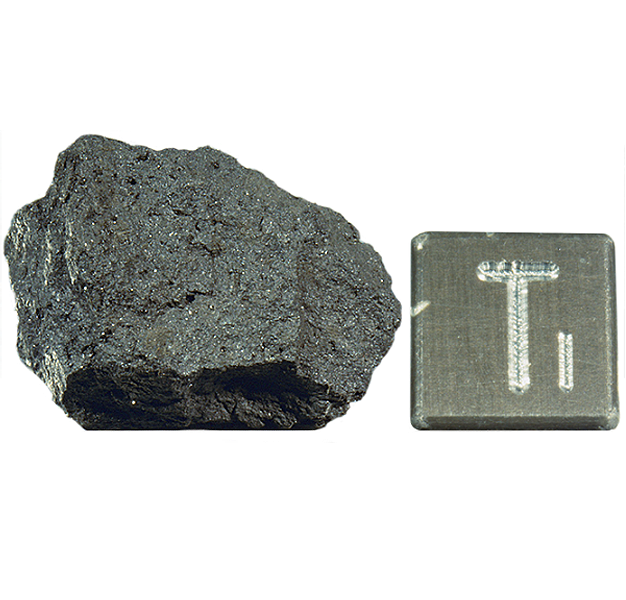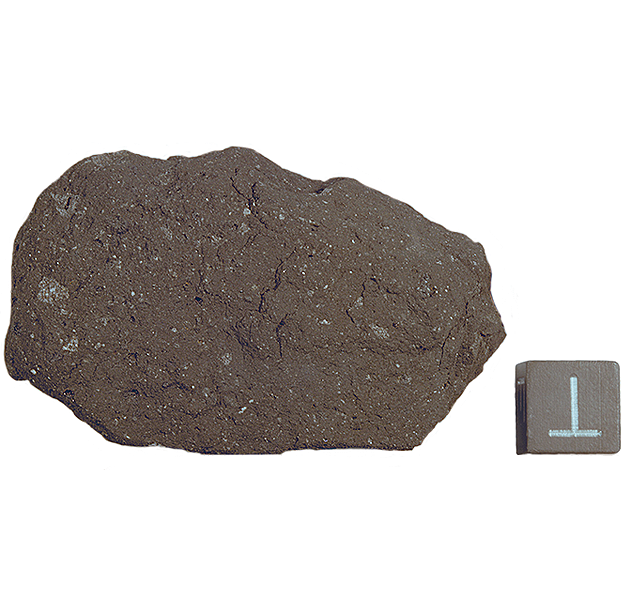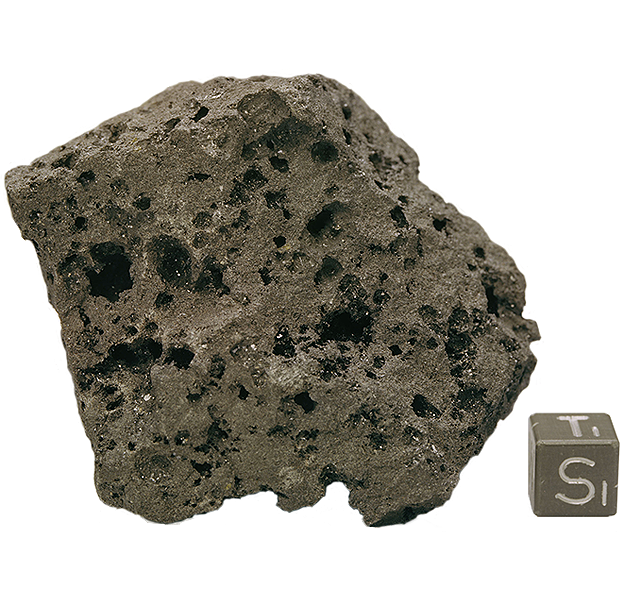
Fact sheet
Sample 10072 is a fine-grained vesicular basalt that crystallised 3.6 billion years ago (measured by Ar/Ar, Rb/Sr and Sm/Nd methods). Its texture is best described as sub-ophitic and intersertal.
Plagioclase feldspar, pyroxene and ilmenite are the three main constituents. The chemically zoned pyroxene crystals contain rare rod-shaped inclusions of tranquillityite. A second lunar species - "armalcolite" is also reported from this sample. Additionally, olivine, cristobalite and glass are present, but in low abundance (the latter two forming in interstitial patches). In reflected light, the iron sulphide troilite can be seen as small pale yellow crystals, occasionally associated with metallic iron.
Further details of this and other Apollo samples are here: http://curator.jsc.nasa.gov/lunar/
The Apollo 11 samples create an iconic collection since they were the first rocks collected by humankind that were returned to Earth from another solar system body. The Apollo 11 team collected and returned 22 kg of rock and soil samples.
Apollo 11 launched from Cape Kennedy on 16 July 1969. An estimated 530 million people watched Armstrong's televised image and heard his voice describe the event as he took "...one small step for a man, one giant leap for mankind" on 20 July 1969.

